Artist Interviews 2021
Gideon 
By Julia Siedenburg

Gideon is a very versatile multicultural artist. Born in Sweden and brought up in Israel, his influence, is another
one of my lucky artist discoveries from the Other Art Fair in Santa Monica.
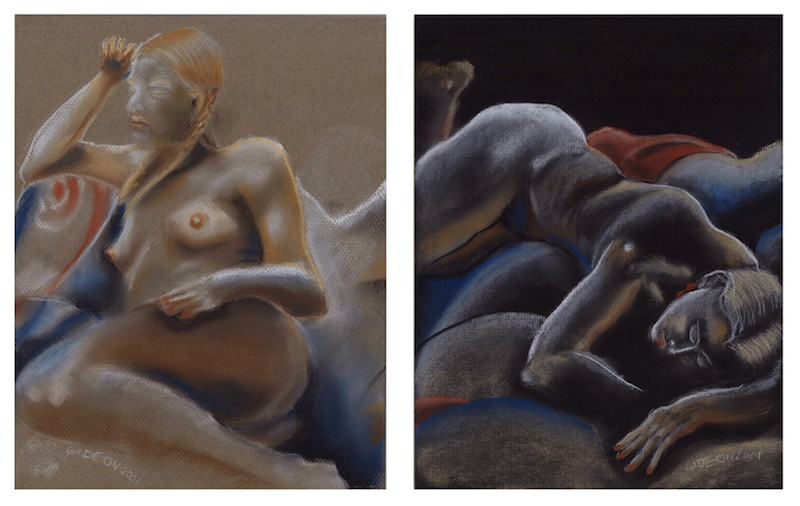
What did growing up in Sweden and Israel do to your understanding of art and making art? Do you think your art would be vastly different if you have had grown up in the US?
My art is influenced by experiences and exposures to landscapes, plants, and people. I was born in Sweden and grew up on a Kibbutz in Israel in the Upper Galilee surrounded by mountains all around with seasonal flowers adorning them, and vast fields of various crops in the valley in between, all of which made a deep impression on my young artistic spirit.
Moved to Holland and experience the almost-constant-winter, snow and ice, and chilling temperatures, white and gray colors contradicting the blue skies and green pastures of my childhood.
Went back to Israel to pioneer agricultural development in the harsh desert, with extremely hot temperatures, at the southern tip of the Dead Sea, just sand sand-dunes, dry creeks and sandstone, seemingly a monotonic view and monochromatic colors, but a beauty of its own.
Surely all these experiences had and still have influenced my art.
Whether my art would be different if I grew up in the US or not, is hard to answer. I was born an artist, its in my genes. How much the different environment would have influenced me is difficult to say, but there would have been, possibly, a greater opportunity to pursue the art much earlier in my life, both academically and professionally, and THAT could have made a big difference.
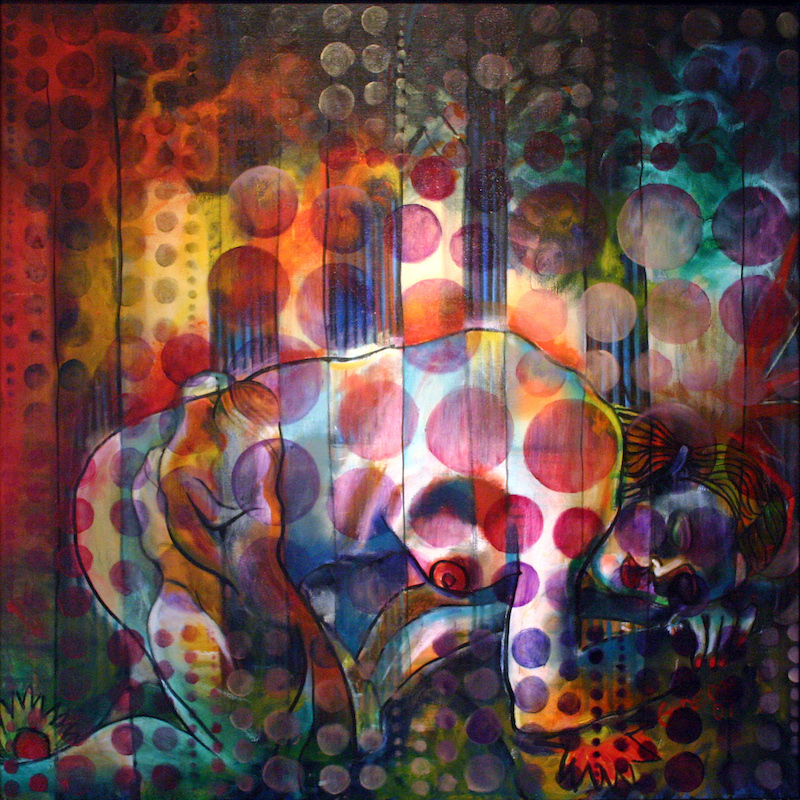
Did your artistic style change based on the places that you lived?
My art has changed with my age, my improved skills, and experience in the momentum of time, though I’m sure that subliminally the moods, colors and sceneries had an influence on my art as it is a reflection on my life altogether.
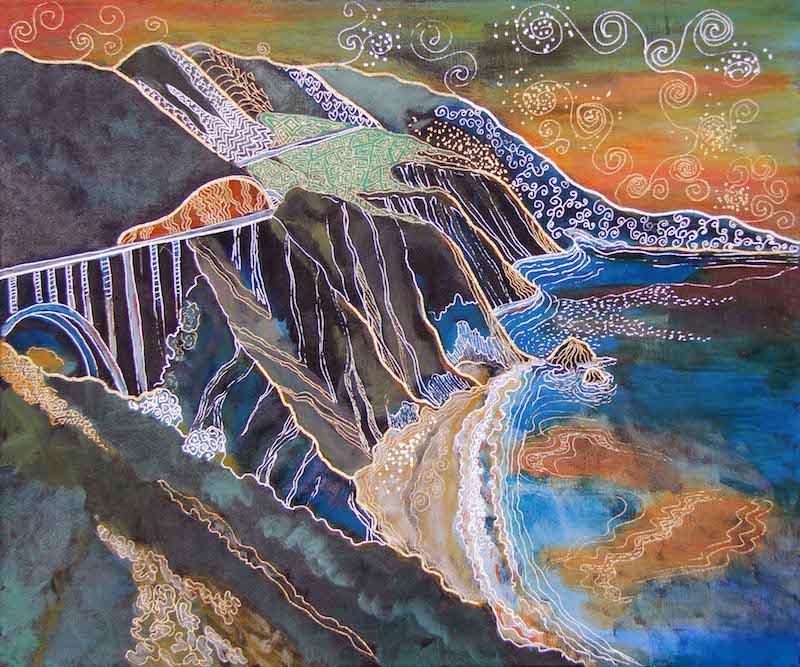
What is your process like?
My process is in most cases an unconscious development of ideas that are influenced by my experiences and encounters with people and sceneries. I don’t paint by demand or to please anyone (not even myself, though the end result should be pleasing to me), it is an emotional and spiritual/mystical process, coming from the inside out. If I don’t have those feelings, I don’t paint.
Once I have the muse, I start a painting without knowing how it will end. I love experimenting and experiencing positive “mistakes”, and by doing so, allowing myself to go through a new process each and every time.
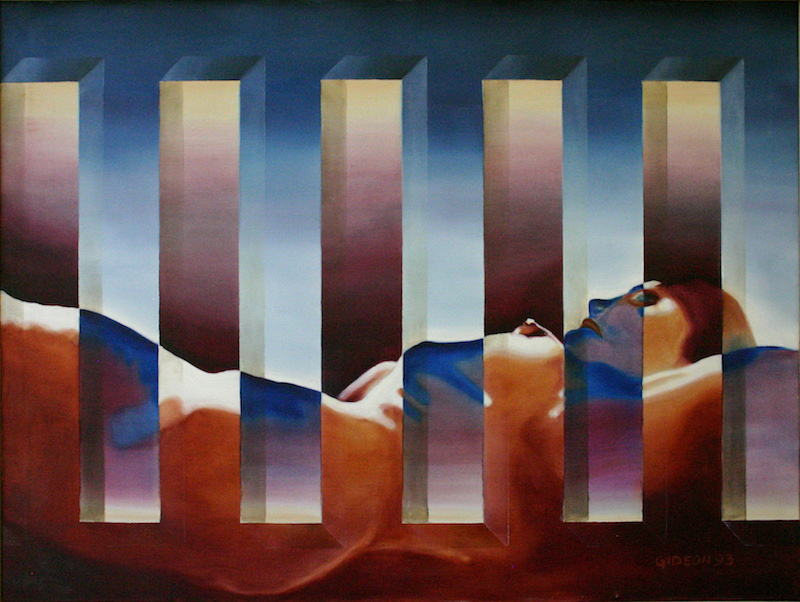
Your pieces are full of vibrancy, lines and shapes. How do you choose your theme/subject?
I’m a colorist, I love colors and happy themes, I see the world through cheerful spectacles, landscapes and bodyscapes both have sensual curvatures, shapes and lines, and I am intrigued by them. I am aware and “see” the negative space (background) before the subject itself. When I look at a tree, I see the spaces between the leaves as the “positive space” and the tree becomes the background.
Most of my themes/subjects derives from my love of nature and the plant world, and my fascination with the human body.
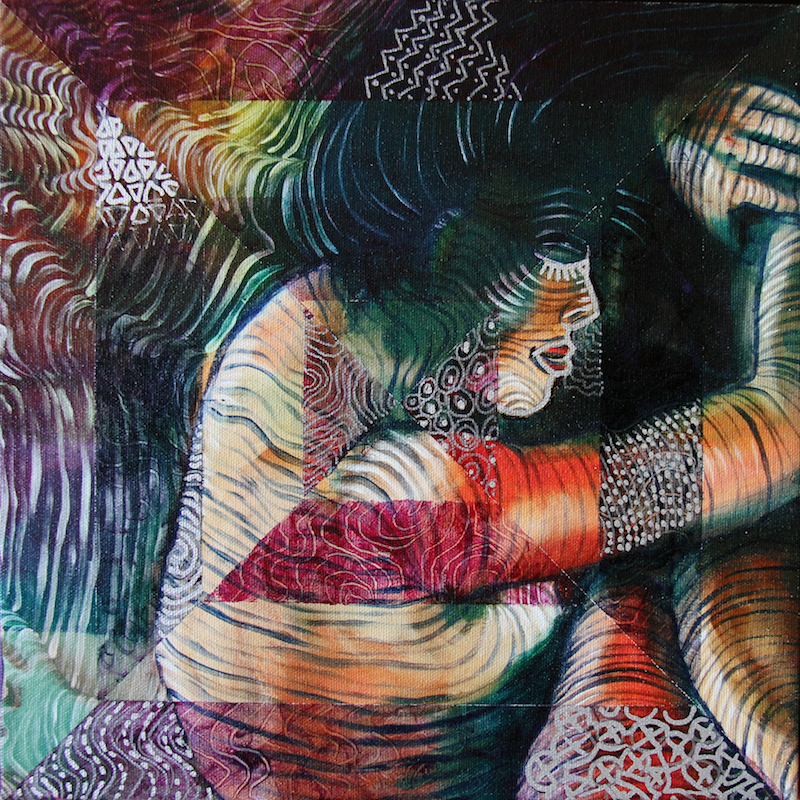
What feeling you want to give the viewers with your artwork? What is the overall message you want to convey?
I see art as an interpretation of the environment and life that surrounds us. I am influenced by the Expressionism Art era in that I am trying to convey the feeling in the painting, and to present my world from a subjective perspective, distorting it for emotional effect in order to evoke moods or ideas. I want the viewer to explore my painting while experiencing a new sensation every time they view it, visually “peeling off” the various layers in the artwork
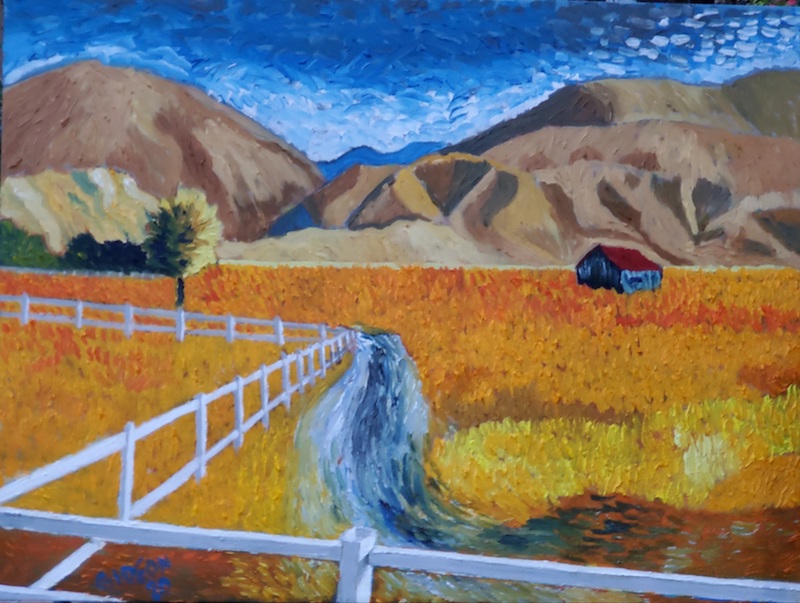
You not only have a lot of experience in the artist world but the art business world as well having owned your own gallery. What was the best and worst part of owning your own gallery as an artist?
I owned two galleries for 9 years combined, in which I have shown my art as well as other artists, mostly emerging artists. The galleries were holding events on a regular basis which drew good crowds. As an artist, I was very prolific and experimental (developing new technics) during those years, most likely due to the constant exposure to art in its diverse forms and the continuous reactions, reviews, feedback and comments by the visitors/viewers.
Owning a gallery requires dedication, patience and lots of time, which may affect the time devoted to painting. It requires the ability to balance the time between the gallery and the studio.
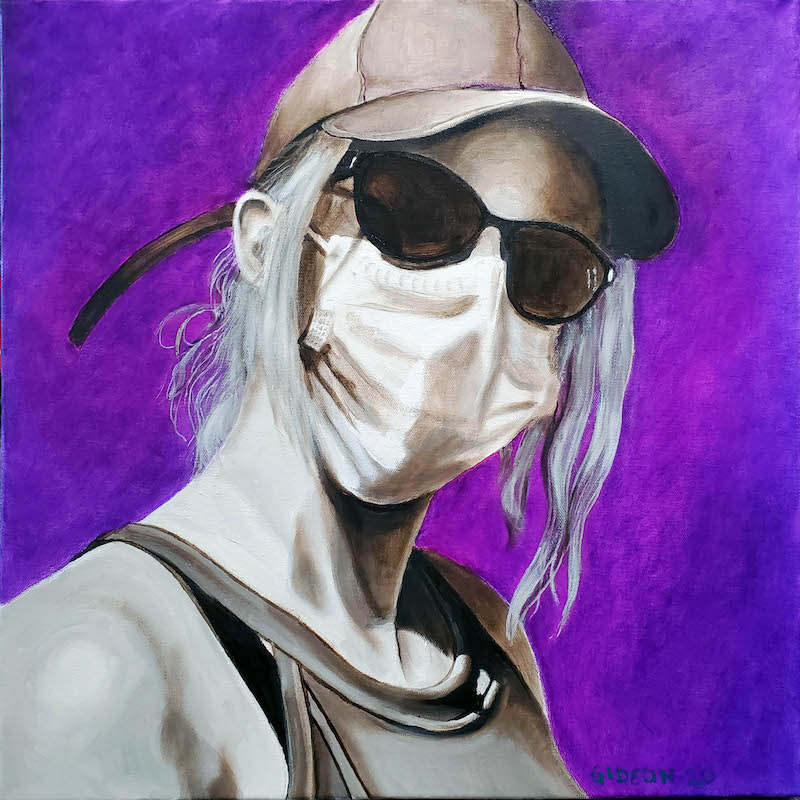
Nowadays, do young people have it easier or harder to make and be successful with their art? How dangerous can honest and controversial art be?
I think that young artists can be as successful as established artists. Nowadays technology and new age communication are not only shifting the technic in art, but also assisting in marketing it. Computerized art and virtual art are allowing for a whole new dimension and perspective on art.
The danger with honest and controversial art is that people will not be able to connect with it and understand the message in it. I believe that most people like to experience art that is pleasing to them and will shy away from provocative art, though it doesn’t necessarily mean that it’s not a successful art.
Tell us a little about your childhood and your background.
I was born in Sweden a couple of years after the end of WWII to Jewish parents who fled Nazi Germany and via Denmark ended up in Sweden who was neutral at that time.
My parents immigrated to Israel, ended up living on a Kibbutz where I grew up, went to school and high school and helped as a young boy with the agricultural industries during breaks and afternoons.
I loved nature and grew up surrounded by it, trees, flowers, beetles and butterflies, and was painting and drawing during the entire period, though lacking formal art studies I loved the exploration of new things. Whenever there was a need for illustrations or other art assignments, I was asked to perform it.
When I was 18, I joint the IDF and served for three years and during the Six Days War and sometimes later backpacked in Europe and ended up in Holland where I got married and had two daughters. Having to raise a family in a new environment hampered my ability to create art, and after four years I returned to Israel, and with the family, including three daughters, started pioneering a new development with several other families in the desert at the southernmost point of the Dead Sea, 1,200 feet below sea level, growing vegetables with advanced technology, computerized drip irrigation system and alike. At the same time, I oversaw the agricultural and drainage affairs in the Dead Sea regional Council, and as such, I was asked to develop raw desert land in Southern California, nearby the Salton Sea.
In 1983 I came to California and turned the desert into a flourishing fields and groves.
Soon after I arrived, I started attending the local community college, and among other things, studied all available aspects of art, painting, drawing, history of art, photography, printing etc.
This opened a whole new window to the art, and nothing could stop me then. I owned two galleries, judged art shows, curated shows, and created a whole new art program and directed it for 10 years with the “Ophelia Project”, a mentorship program designed to assist young girls with low self-esteem in middle school and high school in the Coachella Valley.
I have been showing my art in various galleries including a solo exhibition in NYC, participated in many art shows, and won numerous accolades.
Meanwhile I met Melody in my gallery of that time, and we got married about 10 years ago. Melody is also an accomplished artist, and we are sharing the space in our studio/gallery located near our house, surrounded by beautiful gardens, in La Quinta, California, USA
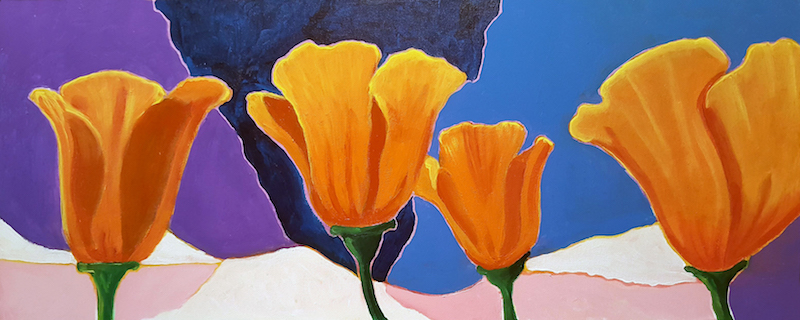
How was your experience at “The Other Art Fair”? Any specific moment that was very special to you?
At “The Other Art fair” that was held at the Barker Hanger in Santa Monica this past September, I displayed a group of art pieces that I created over the last 20 years or so. Some of them were finished a completed just prior to that show. They all had a few commonalities, such as 3D affect (either real or not) with a lot of subliminal messages in them, somewhat mystical and surreal, though all have been created with different media, oil paint on canvas or wood panels, printing on clear plexiglass, wood sculpting and such.
The reactions of the viewers were phenomenal, the time that they spent exploring some of the art, with each time discovering a new aspect of it and wondering what the meaning of it is, plus finding it as very unique art (something they’ve never seen before), all of it was a very satisfying experience.
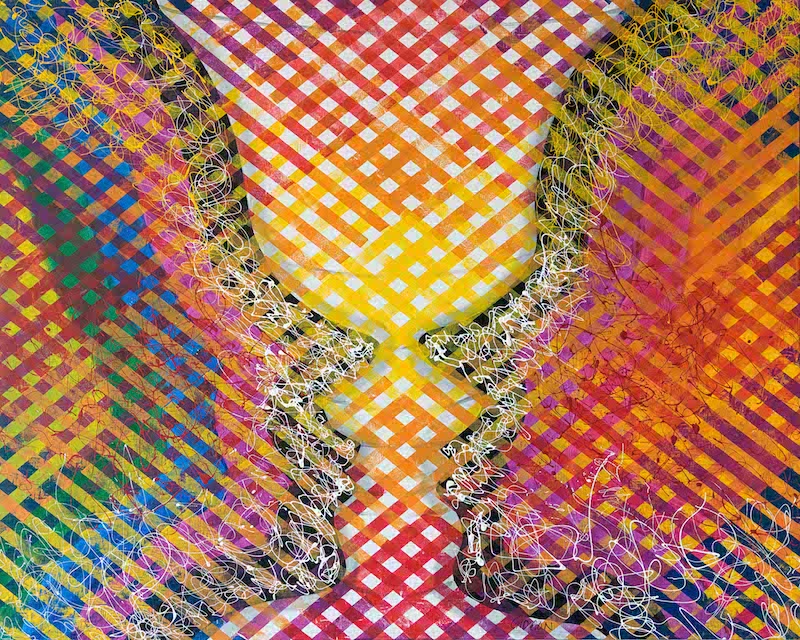
What is next for you? What are your plans for the future?
I’m planning to continue and create art with new explorations of technics and ideas, while at the same time feel like I need to close a circle, going back to my older, traditional style, oil on canvas, figurative and surrealistic art.
I hope to land a spot in a prominent gallery or two, maybe get back into teaching some specific aspects of art.
Opportunities come and go, and I hope to continue and be in my happy zone, creating more art that gives me joy and sense of satisfaction
|
|

